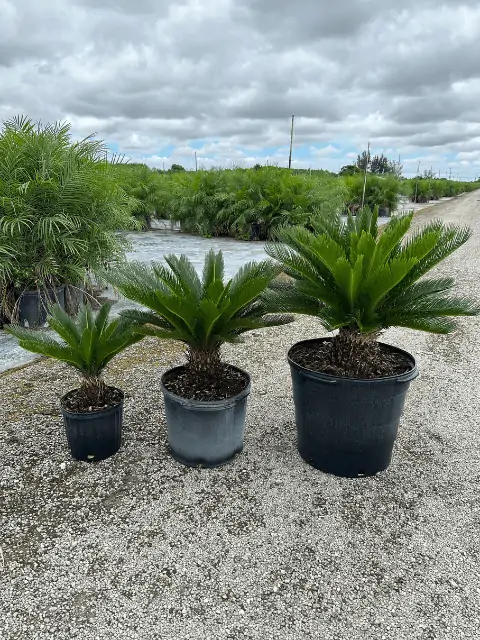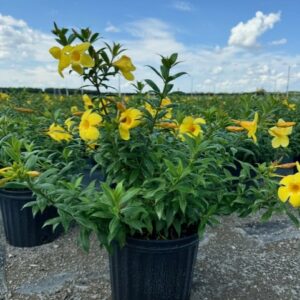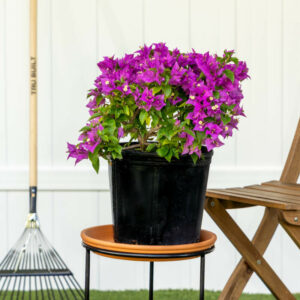King Sago
The King Sago (Cycas revoluta) is a slow-growing, ornamental cycad with dark green, stiff, feather-like leaves. It thrives in USDA zones 8-11 and prefers full sun to partial shade in warm, humid climates. Reaching 3-10 feet tall, it’s drought-tolerant once established and requires well-draining soil. Ideal for tropical or Mediterranean landscaping, it works well in containers or as an accent plant. Be cautious, as all parts of the plant are toxic to pets and humans if ingested.
$30.41 – $198.65
Related products
-
All Products
Allamanda Dwarf
$22.63 – $50.71 This product has multiple variants. The options may be chosen on the product page -
All Products
Bougainvillea Bush
$43.46 – $434.62 This product has multiple variants. The options may be chosen on the product page
The King Sago (Cycas revoluta) is a popular ornamental plant, though it is technically not a true palm but a type of cycad. Here’s more about this ancient plant:
1. Color:
Foliage: Dark green, stiff, feather-like leaves that grow in a rosette pattern.
Trunk: Brown, rough, and typically resembles a palm tree’s trunk.
Cones: Male plants produce a large yellowish cone, while female plants develop a globe-shaped structure at the center.
2. Climate:
Preferred Climate: Subtropical and tropical. It prefers warm, humid environments but can tolerate a wide range of conditions.
Temperature: Ideal temperature range is 65-85°F, though it can survive short periods of frost (as low as 15-20°F).
3. Size:
Height: Grows slowly and typically reaches 3-10 feet tall in garden settings, but it can get taller in ideal conditions.
Spread: Can have a spread of 6-8 feet, with its leaves arching outwards in a symmetrical pattern.
4. Care:
Soil: Prefers well-draining soil with a slightly acidic to neutral pH.
Watering: Drought-tolerant once established, but prefers regular watering with time for the soil to dry between waterings. Overwatering can cause root rot.
Sun Exposure: Full sun to partial shade. It grows best in bright, indirect sunlight or part shade in very hot climates.
Pruning: Dead or yellowing fronds should be pruned to maintain its appearance.
Fertilizing: Fertilize with a slow-release, palm or cycad fertilizer during the growing season.
5. USDA Zones:
Best suited for zones 8-11. It can tolerate light frost, but it’s recommended to protect it in colder climates.
6. Landscaping:
Used in tropical, desert, or Mediterranean-themed landscapes due to its ancient, architectural look.
Ideal for containers, rock gardens, and poolside plantings.
Works well as a specimen plant or accent in larger garden beds.
7. Additional Info:
Toxicity: All parts of the King Sago, especially the seeds, are toxic to pets and humans if ingested.
Slow Growth: It is a very slow-growing plant, often taking many years to reach full size.
Pest/Disease Resistance: Generally pest-free, but may be susceptible to scale or mealybugs.
The King Sago is highly valued for its symmetrical, exotic look and low-maintenance care. However, its slow growth and toxicity should be considered when adding it to your garden.
| Size | 25 Gallon, 3 Gallon, 7 Gallon, 15 Gallon |
|---|



